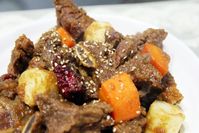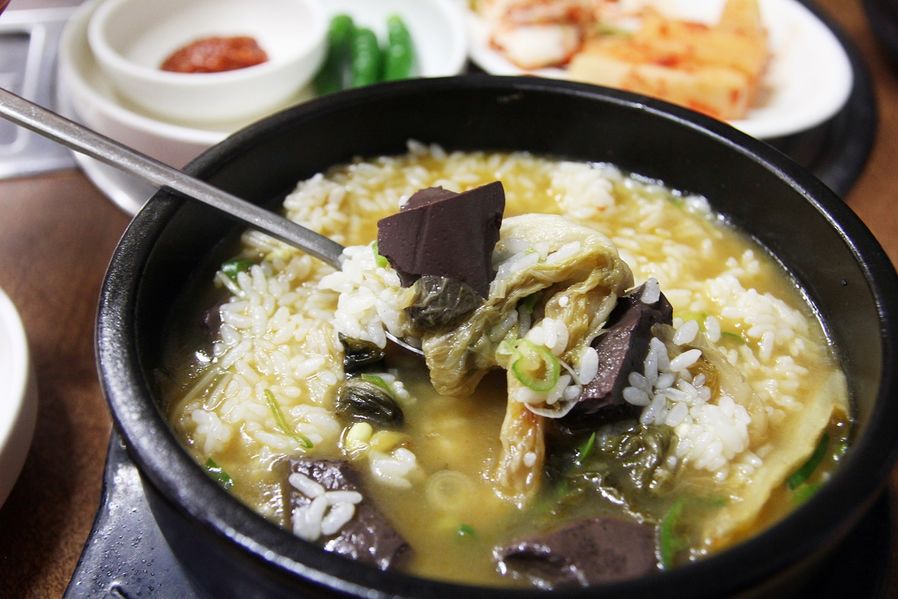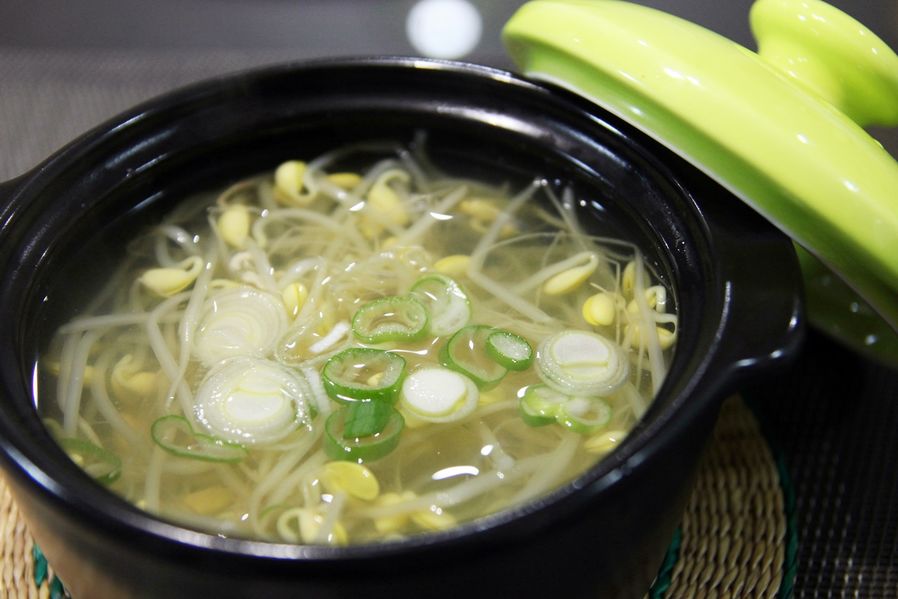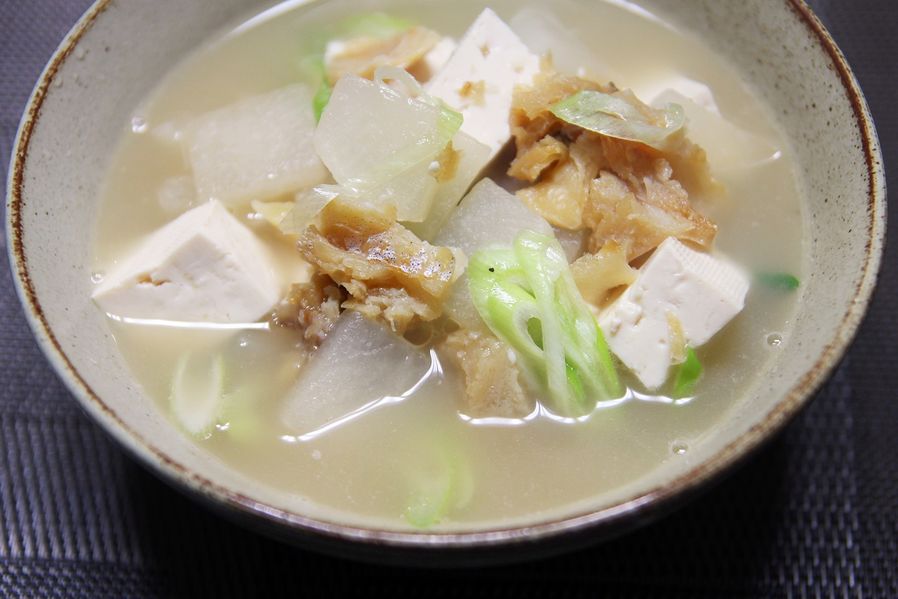1. Ingredients for Haejang-guk
-Primary ingredients: Beef or pork
-Secondary ingredients: Seasoning (soy sauce or Deonjang) and vegetables (bean sprouts, radish and cabbage leaves)
2. Taste evaluation
-Spicy:☆☆☆☆☆
-Salty:★★☆☆☆
-Sweet:☆☆☆☆☆
-Sour:☆☆☆☆☆
3.
Introduction to Haejang-guk (Hangover soup)
Haejang-guk
is practically a hangover soup. After Koreans drink alcohols, they
enjoy eating hot soup on the next day to make their stomach feel
better.
Haejang-guk
used to be called Seongju-tang, which refers to hangover soup in
Goryeo Dynasty era. It is meat broth boiled with noodles, sliced
meat, akane powder and spring onions, and it is similar to today’s
Haejang-guk.
Since
then, there has no record of eating Haejang-guk in Joseon Dynasty era
because drinking was prohibited at the time but hangover soup in a
big bowl at an inn was discovered in a genre painting from the late
Joseon Dynasty era. This
stew became Haejang-guk today.
The
reason why Haejang-guk became so popular in Korea in spite of its
short history is because of Koreans’ eating habit. Koreans enjoy
eating rice with hot soup. And ironically, they say, “Ah,
siwonhada(it’s cool)” when the soup is actually hot.
It’s
because hot soup helps you with blood circulation and makes your body
relaxed, relieved and cool.
People
seem to look for hot soup Haejang-guk for that matter because they
want to make their stomach and head feel better.
Plus
getting sweaty helps you recover from hangover quickly. So sweating
while drinking hot soup is medically good for your body.
You
could simply put bean sprouts in Haejang-guk but mostly Seonji
(clotted blood from slaughtered cow) or pork bones are boiled in
water. It consists of high protein meat, bean sprouts of high
aspartic acid, vegetables containing lots of digestive fiber and
Deonjang for its flavor.
Soup
tastes deep and heavy from meat and salty from Deonjang, and smells
like bean sprouts.
There’s
a famous Haejang-guk restaurant that opened in 1937 called
Cheongjinok in Jongno, Seoul.
There’s
no restaurant in Korea with 100-year history due to the Korean War.
For
that matter, Cheongjinok is special since it has a 78-year history in
Korea.
If
you already tasted Korean traditional drinks, Soju or Makgeolli, you
should eat Haejang-guk at Cheongjinok, get sweaty and get sober.
Searchon Wikipedia
4.
Kinds of Haejang-guk
Among
many kinds of Haejang-guk, to name a few…
*
Seonji Haejang-guk (ox blood hangover soup) – The most famous
Haejang-guk. Beef soup boiled with Seonji(clotted blood from
slaughtered cow), outer leaves of cabbage and bean sprouts.
*
Ppyeo Haejang-guk (pork rib hangover soup) – Spicy soup boiled with
pork bones and outer leaves of cabbage and seasoned with chili pepper
sauce.
*
Kongnamul-guk (bean sprouts soup) – Pure soup with bean sprouts
that are rich in aspartic acid that is good for alcoholysis and salt
for seasoning.
*
Hwangtae Haejang-guk (dried pollack hangover soup) – Pure soup
boiled with dried pollack that is good for detoxification function
and salt for seasoning.
5.
How to enjoy Haejang-guk even more
When
you order Haejang-guk, it’s served in a hot earthen pot called
Ttukbaegi.
Although
it is believed that sweating and drinking hot soup helps you get rid
of hangover, you’d better cool it down by stirring the soup with
the spoon if it is too hot for you and then put a bowl of rice in it
before you get all sweaty.
If
you’ve had enough of soup and rice, you will feel better because it
stimulates the circulation of the blood and clears your head.
Can’t
you eat Haejang-guk if you didn’t drink? Of course you can.
Haejang-guk
is a very popular meal in Korea.
It’s
called Haejang-guk because hot soup with healthy ingredients is good
to relieve hangover.
Korea
has interesting nightlife as any other Southeast Asian countries.
One
of them would be drinking Makgeolli with Buchimgae or Soju with
Samgyupsal.
If
you already had Soju and enjoyed the night, you should try hot
Haejang-guk the next day.













